[ Home ] [ Controlled Substances ] [ Hallucinogens ]
PHENCYCLIDINE
|
The acronym PCP stems from its organic name 1-(1-phenylcyclohexyl) piperidine, which alludes to its relatively simple production from the arylcyclohexylamine piperidine.
More than 60 designer analogs more toxic than PCP, but able to escape clinical detection, were common before the sale of piperidine and its derivatives became illegal in the United States in 1978. Ketamine is the only one authorized for medical use, and it was often stolen from veterinary offices for its PCP-like effects.Like ketamine, PCP was formerly used as a preinduction anesthetic and animal tranquilizer, hence it has street eponyms such as "horse tranquilizer," hog," and "elephant".
It was prized for its ability to provide anesthesia and analgesia without triggering cardiorespiratory depression, but was soon recalled when patients experienced psychosis, agitation, and dysphoria post-operatively.Phencyclidine continues to be found in PCP-laced marijuana cigarettes ("whacko tobacco")

https://www.ncbi.nlm.nih.gov/pmc/articles/PMC2859735/
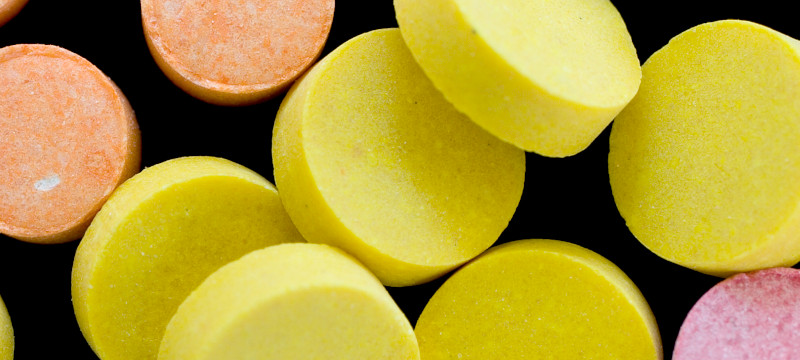
PCP (Phencyclidine)
Phencyclidine (PCP):
An illegal street drug that usually comes as a white powder, which can be dissolved in alcohol or water. It can be bought as a powder or liquid.
PCP can be used in different ways:
- Inhaled through the nose (snorted)
- Injected into a vein (shooting up)
- Smoked
- Swallowed
Street names for PCP:
- Angel dust
- Embalming fluid
- Hog
- Killer weed
- Love boat
- Ozone
- Peace Pill
- Rocket Fuel
- Super Grass
- Wack
PCP is a mind-altering drug:
This means it acts on your brain (central nervous system) and changes your mood, behavior, and the way you relate to the world around you. Scientists think it blocks the normal actions of certain brain chemicals. PCP is in a class of drugs called hallucinogens. These are substances that cause hallucinations. These are things that you see, hear, or feel while awake that appear to be real, but instead have been created by the mind. PCP is also known as a dissociative drug. It causes you to feel separated from your body and surroundings.

https://medlineplus.gov/ency/patientinstructions/000797.htm
Hallucinogens like PCP create altered states of perception and feeling:
PCP is a "dissociative" anesthetic. Its sedative and anesthetic effects are trance-like. People using PCP experience a feeling of being "out of body" and detached from their environment. Also known as angel dust, killer weed and supergrass, among other slang terms, PCP is sold in a variety of forms including tablets, capsules and colored powders. It has a distinctive bitter chemical taste. PCP can be snorted, smoked, injected or swallowed. It is most commonly sold as a powder or liquid and is applied to a leafy material such as mint, parsley, oregano, tobacco, or marijuana when used for smoking.
Understand the risks:
At low to moderate doses, PCP can cause distinct changes in body awareness, similar to those associated with alcohol intoxication, as well as generalized numbness of the hands and feet and poor muscular coordination.
At high doses:
PCP can cause hallucinations as well as seizures, coma, and death (though death more often results from accidental injury or suicide during PCP intoxication). High doses can also cause effects similar to symptoms of schizophrenia, such as delusions, paranoia, disordered thinking, a sensation of distance from one's environment, and catatonia. Speech is often sparse and garbled.
PCP has sedative effects, and interactions with other central nervous system depressants, such as alcohol and benzodiazepines, can lead to coma or accidental overdose.
Many people who use PCP are brought to emergency rooms because of PCP's unpleasant psychological effects or because of overdoses. In a hospital or detention setting, they often become violent or suicidal, and are very dangerous to themselves and to others. They should be kept in a calm setting and should not be left alone.

https://drugfree.org/drugs/pcp/
PCP was first used in the 1950s: Used as an anesthetic in the 1950s and later became popularized in the 1960s and 70s as a recreational drug. Popular for its ability to cause the user to detach and disassociate from their surroundings, it produces a strong feeling of euphoria.
The drug is known for uncomfortable withdrawal effects, producing delusions, irritability, and anxiety when "coming down."
PCP can be in liquid form, yellow or clear in color, or in a power or tablet form, easily dissolving in water. PCP is also often mixed with other drugs, such as ecstasy, methamphetamine, LSD and mescaline, typically without the user's knowledge. Reports of drug users have included combining PCP with tobacco as they "dip marijuana or tobacco" in embalming fluid speculated to be PCP.

https://www.addictioncenter.com/drugs/hallucinogens/pcp-phencyclidine/
In its pharmaceutically pure form:
PCP is a white powder which readily dissolves in water. It also is available in a liquid form called "water" or "dip" in which cigarettes are dipped into the liquid, dried, and smoked. In street form, PCP is often adulterated and misrepresented as other drugs.
1965:
PCP made its first illicit appearance in 1965 on the West Coast. At that time it rapidly developed a bad street reputation and had only limited popularity. Since then, there have been sporadic outbreaks of its use. Most recently, evidence from a variety of sources suggests a marked increase in use. Although its original method of use was oral ingestion, presently PCP is commonly smoked or snorted. Depersonalization and distortion of body image are among the effects reported most frequently from a moderate amount of PCP The user feels a sense of distance and estrangement from his surroundings. Time expands and body movements are slowed.
This is an extremely concerning drug for several reasons. It gives the user an uncontrollable adrenaline high, euphoria, panic sensation. It also separates nerve receptors whereby the user feels no pain regardless of the intensity. Because of these two factors, combative users are difficult to control, in some cases having the ability to break through a set of handcuffs.

https://www.ok.gov/obndd/Drug_Facts/PCP_Fact_Sheet.html
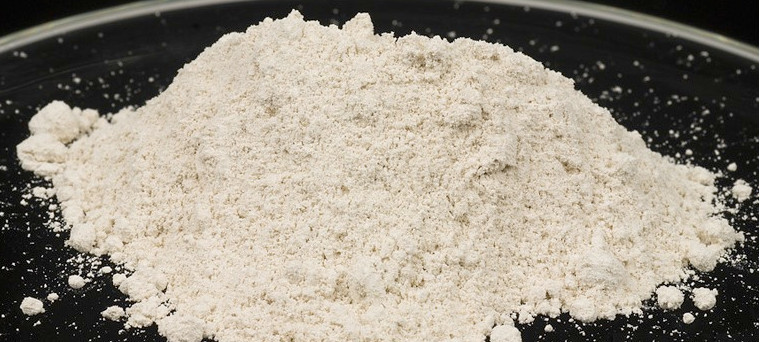
What are the effects?
- Effects vary greatly by user and dosage, but can range from a heavy body and mental high to full blown hallucinations that are indistinguishable from reality.
- General effects tend to come on quickly depending on route of administration. Taking 2-20 minutes on the come-up, gradually peaking after 1-2 hours, plateauing for 2 hours, then coming down over 24 hours. Once near baseline, residual effects can be felt for 24 hours afterwards, lending to an "afterglow" or hangover.
Be careful!
- PCP can be extremely powerful, being able to cause delirious states and very realistic, life-like hallucinations.
- PCP can cause seizures, loss of self, disturbing hallucinations, psychotic episodes and delusional thought patterns. PCP can also cause acute amnesia that can cover entire days.
- PCP can also cause intense hangover symptoms, such as nausea and numbness in extremities.

https://dancesafe.org/pcp/
In 1979 legal manufacturing of PCP in the United States (U.S.) was suspended.
It is now made illegally in secret laboratories, along with dozens of analogs (drugs that are chemically similar) available on the street. It is thought to be made primarily in the United States (U.S.), mostly in Southern California, but it is distributed across the country.
What happens when someone takes PCP?
PCP affects multiple neurotransmitter systems in the brain. It inhibits the reuptake of dopamine, norepinephrine, and serotonin. It also inhibits the action of glutamate by blocking NMDA receptors, which are responsible for pain sensation, emotions, learning, and memory functions.
Interrupting these receptors allows the brain to disconnect from normal sensory experiences, or "reality." In higher doses, however, it may also excite these receptors.
A typical dose is 5 to 10 milligrams, and 10 mg has been reported to cause stupor. The effects are felt 30 to 60 minutes after oral ingestion, or a few minutes after smoking. Immediate effects last 4 to 6 hours, but a return to a normal state can take up to 24 hours. However, because the drug is made illegally in uncontrolled conditions, there is no way of knowing how much is being taken, or what the effect will be.

https://www.medicalnewstoday.com/articles/305328
The effects of PCP are unpredictable and the side effects vary widely from person to person, ranging from sensory changes to schizophrenic-like behavior to stroke.
Common Side Effects:Side effects of PCP use include numbness, loss of coordination, disorientation, confusion, dizziness, nausea, hallucinations, feelings of detachment, increased heart rate, and elevated blood pressure.
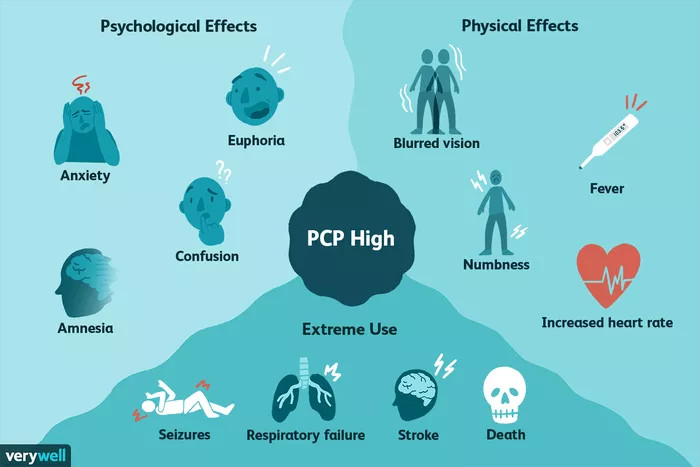
| Common Side Effects: | |
|---|---|
| Low and Medium Dosage: | High Dosage: |
|
|
What the Experts Say:
Soon after PCP was introduced as a street drug in the 1960s, it gained a reputation of causing bad reactions and never became very popular with illicit drug users. People who misuse PCP can become violent or suicidal while taking the drug.
Since nearly all PCP production is illegal, there is no standard for purity or dosage. As a result, there is no way to know how much is being taken, making its use particularly dangerous.

https://www.verywellmind.com/basic-facts-about-pcp-67498
Violent Behavior:
PCP is a powerful hallucinogen and anesthetic that is well known for causing erratic and violent behavior in users. Like other hallucinogens, PCP causes feelings of detachment. People who use it feel distant and estranged from their surroundings. While PCP does not trigger full visual hallucinations, like DMT or Salvia, the user can feel like they are in a new place and suffer from image distortions. This makes everything they are seeing seem like something new and potentially terrifying. On top of that, moderate amounts of PCP can also trigger auditory hallucinations. It's possible for the person experiencing these effects to become disassociated and erratic. It may even be dangerous for those around the user depending on how bad of a trip they are experiencing. When someone takes a larger dose of PCP, not only could their hallucinations become more intense, but their physiological symptoms may also change.
Amnesia:
Given the nature of hallucinogens, any amount could trigger amnesia. This is not necessarily due to brain damage, but that the person is experiencing hallucinations that are not actually happening. Because of that, they may not remember what was actually going on around them, or even what they hallucinated.

https://www.rehabspot.com/drugs/hallucinogens/pcp/
How long do the effects take to kick in?
- If PCP is smoked, snorted, or injected, you typically begin to feel the effects within 2 to 5 minutes.
- If you ingest it orally, the effects take longer to kick in - usually 30 to 60 minutes.
How long do the effects last?
PCP's effects generally last from 6 to 24 hours but linger up to around 48 hours in some people. In people with a lot of body fat, effects can come and go or fluctuate over a few days to months.
PCP is fat soluble and stored by fat cells, so your lipid stores and fatty tissues hang on to it longer.
Factors like how much you use and whether you're using other substances also affect how long you feel angel dust.
Is there a comedown?
It seems to depend on how much you use, according to user accounts on forums like Reddit (https://www.reddit.com/r/PCP/). Low doses mostly appear to wear off gradually and produce an "afterglow" in some people with mild stimulation. Coming down from a larger dose, however, involves intense hangover symptoms, like:
- Nausea
- Headache
- Trouble Sleeping
The comedown usually lasts around 24 hours once you reach baseline.

https://www.healthline.com/health/pcp
| Duration: A strong dissociative drug. PCP works primarily as an NMDA receptor antagonist. Also referred to as "wet" or "angel dust". Best known for stories of the strange and sometimes violent behaviour of those under its influence, though it is likely these are only in overdose cases. NOTE: Be cautious with dosing, this drug is known to cause mania. | |||
| Route | Onset | Duration | After Effects |
|---|---|---|---|
| Tripsit Factsheets | |||

PCP Basic Information: https://drugs.tripsit.me/pcp | |||
| All ROAs: | 2-20 minutes | 4-6 hours | 12-24 hours |
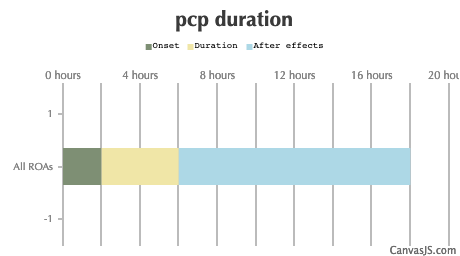
| |||
| NOTE: Be cautious with dosing, this drug is known to cause mania. | |||
Aliases:
| |||
Drug Tests:
Elimination of PCP in 72 hours urine ranges from 4 to 19% for unchanged drug and 25 to 30% for conjugated metabolites. Approximately 97% of a dose is excreted in 10 days, and PCP use can be detected in urine by immunoassay up to a week following a high dose. Urine PCP concentrations ranged from 0.4-340 mg/L in 19 intoxicated patients.

https://www.thefix.com/content/what-pcp
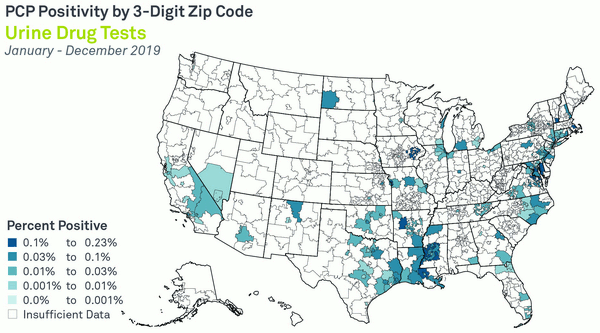
Map of the U.S. depicting phencyclidine (PCP) positivity

http://www.questdiagnostics.com/home/physicians/health-trends/drug-testing/map_pcp/
Phencyclidine is an illegal, hallucinogenic drug that was initially used as an anesthetic agent in the 1950s and early 1960s, but was then withdrawn in 1965 because of dissociative hallucinogenic effects that were often disturbing and sometimes severe and prolonged. Phencyclidine is a noncompetitive NMDA (N-methyl-D-aspartate) receptor antagonist and glutamate receptor antagonist, but also interacts with other receptor sites, and may have effects with dopamine, opioid and nicotinic receptors. Phencyclidine disrupts the functioning of receptors for the neurotransmitter glutamate, which plays a major role in the perception of pain as well as in learning, memory, and emotion. It also influences the actions of the neurotransmitter dopamine, which causes the euphoria associated with drug use. Phencyclidine overdose deaths may occur after taking a large dose, though many phencyclidine related deaths result from delusions and other psychological consequences of the drug's use. There have been reports of death due to accidental drowning, leaping from high places, and motor vehicle accidents in addition to violent episodes of self-mutilation, suicides, and homicides.
 Phencyclidine:
Phencyclidine:
https://drugs.ncats.io/drug/J1DOI7UV76
Phencyclidine Hepatotoxicity:
Phencyclidine is no longer used medically and its production is outlawed. Nevertheless, phencyclidine remains an agent of abuse, used for its hallucinogenic effects. At low doses, phencyclidine appears to have little effect on the liver. However, high doses of phencyclidine have been associated with malignant hyperthermia which can trigger acute hepatitis necrosis and liver failure. Patients generally present with seizures and coma followed by severe hyperthermia, rhabdomyolysis and renal failure. The liver injury arises 1 to 2 days after the overdose with marked, rapid elevations in serum ALT, AST and LDH, with minimal increases in alkaline phosphatase and delayed rises in bilirubin (Case 1). Coma arises early along with prolongation of the prothrombin time, hyperammonemia and metabolic acidosis. The abnormalities resolve almost as rapidly as they develop and with suitable life support, survival is not uncommon (Case 1). The clinical syndrome is that of acute hepatic necrosis and resembles the acute liver injury that occurs with heat shock, severe hypoxia and hepatic ischemia. Liver biopsy shows severe centrilobular necrosis with mild inflammation.C Likelihood score: C[HD] (probable cause of clinically apparent acute liver injury but only when given in high doses).
 Phencyclidine Overview:
Phencyclidine Overview:
https://www.ncbi.nlm.nih.gov/books/NBK548654/
Interactions:
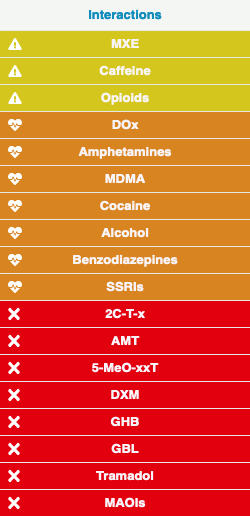

https://psychonautwiki.org/wiki/PCP
Addiction:
Is phencyclidine (PCP) addictive?
Yes, phencyclidine is addictive. Drug cravings, drug-seeking behavior, and withdrawal symptoms are common complications.There are no specific approved drug treatments for phencyclidine addiction or withdrawal.
In a hospital, emergency room, or detention setting, PCP abusers may become irritated, violent or suicidal. They are not only dangerous to themselves, but to others. They should be kept in a calm setting, and not left alone to protect them from suicidal tendencies or accidental injury.
Interactions:
Drug Interactions (8)
What other drugs will affect Phencyclidine?
A total of 8 drugs are known to interact with Phencyclidine.
- 8 moderate drug interactions
- apraclonidine ophthalmic
- brexanolone
- brimonidine ophthalmic
- brimonidine topical
- esketamine
- flibanserin
- ioflupane I 123
- asmiditan
 Phencyclidine (PCP) Interactions:
Phencyclidine (PCP) Interactions:
https://www.drugs.com/phencyclidine.html
PCP Timeline by Erowid:
| 1926: | Phencyclidine (PCP) is first synthesized. |
| mid 1950s: | Parke Davis begins investigating PCP as a human anesthetic. |
| 1957: | PCP tested for the first time on 64 human subjects. Worrying side effects such as hallucinations, mania, delirium and disorientation manifested. |
| 1963: | PCP is patented as a surgical analgesic and anesthetic under the name 'Sernyl'. |
| 1965: | PCP is withdrawn for use on humans because of reports of the negatives effects caused by its use. |
| 1967: | PCP is marketed under the name Sernylan as a tranquilizer and anesthetic for animals. |
| 1967: | PCP shows up on the street as a recreational drug under a variety of names including 'angel dust', 'hog', 'super-weed', and 'THC'. Because it is inexpensive and relatively easy to make it is frequently marketed and sold as other substances including Cocaine, LSD, and THC. |
| Apr 6, 1969: | PCP was placed under DACA control in the United States, making it illegal to possess, sell, or manufacture except for personal use. |
| Nov 1969: | DEA's forerunner, the Bureau of Narcotics and Dangerous Drugs, reports in their Microgram newsletter: "Phencyclidine HCI impregnated on plant material and promoted as 'Hog' was recently analyzed by our Washington Regional laboratory. The evidence was seized in Virginia, and a localpolice department states that the term 'Hog' has been used in the area for alleged 'THC', reportedly mixed with strychnine." |
| Early 1970s: | PCP is placed in schedule III of the Controlled Substance Act. |
| 1973 - 1975: | Use of PCP spreads quickly in the U.S. |
| 1978: | PCP is moved from schedule III to schedule II of the Controlled Substance Act. |
| 1979: | 7 percent of high school seniors report having used PCP in the last year. |
| 1980 - 1995: | The use of PCP among high school students steadily declines between 1979 and and the mid 1990s. |
| 2010: | Five percent of men arrested in the District of Columbia test positive for PCP. |
 PCP Timeline:
PCP Timeline:
https://www.erowid.org/chemicals/pcp/pcp_timeline.php
Breastfeeding:Summary of Use During Lactation:
A single case of phencyclidine use has been reported in which a small amount of phencyclidine was detected in breastmilk over 6 weeks after use of an unknown quantity of the drug. Effects on the breastfed infant are unknown.The Academy of Breastfeeding Medicine suggests that women who have abused phencyclidine generally should not breastfeed unless they have a negative maternal urine toxicology at delivery, have been abstinent for at least 90 days, are in a substance abuse treatment program and plan to continue in it during the postpartum period, have the approval of their substance abuse counselor, have been engaged and compliant in their prenatal care, and have no other contraindications to breastfeeding.
 Phencyclidine Drug Levels and Effects:
Phencyclidine Drug Levels and Effects:
https://www.ncbi.nlm.nih.gov/books/NBK500728/
For Emergency Department Personnel:
By recognizing the signs and symptoms of PCP intoxication, health care providers - especially those on the front lines of emergency care - can help to ensure that patients who come into medical facilities receive immediate and appropriate care. For ED personnel in metropolitan areas with high rates of illicit drug use, heightened awareness of the reemergence of PCP may be especially useful for assessing patients who present with violent or suicidal behavior.
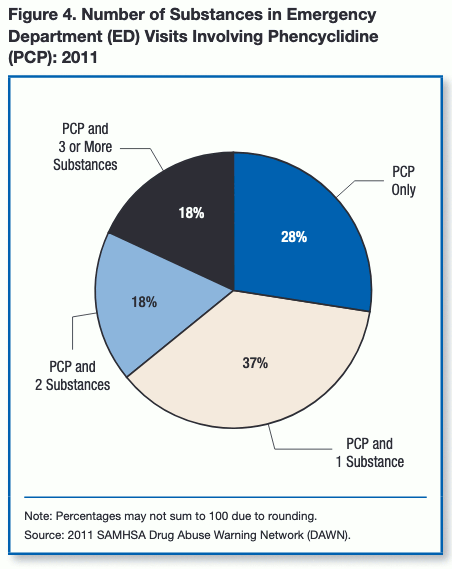
Other illicit drugs, such as marijuana, cocaine, and heroin, were involved in approximately half (48 percent) of PCP-related ED visits in 2011


https://www.samhsa.gov/data/sites/default/files/DAWN143/DAWN143/sr143-emergency-phencyclidine-2013.pdf
Street Names:
- Amp
- Angel Dust
- Angel Hair
- Angel Poke
- Animal Tranq
- Beam Me Up Scotty
- Cadillac
- Cj
- Crystal Supergrass (With Marijuana)
- Cyclones
- Dank
- Dust
- Elephant
- Elephant Tranq
- Embalming Fluid
- Flake Hog
- Fry
- Goon
- Haze
- Hog
- Horse Tranq
- Hydro, Illy
- Ka-Pow
- Ketamine
- Killer Joints (With Marijuana)
- Killer Weed
- Kj
- Love Boot
- Magic Dust
- Mist
- Oxone
- Ozone
- PCE
- PCP
- PCPy
- Peace Pill
- Rocket Fuel
- Scuffle
- Sernyl
- Sherm
- Sherms
- Special K
- Soma
- Squeeze
- Star Dust
- Super Weed
- Surfer
- Tac
- TCP
- Tic
- Tranqs
- Wack
- Whack
- Zombie
- Zoot
 Phencyclidine PCP:
Phencyclidine PCP:
https://drugtestingace.com/resources/glossary/define-phencyclidine-pcp
(1994) PCP Drug Intelligence Report:
- PCP was first synthesized in 1926. It was not unti1 1957, however, that it was developed as a human anesthetic.
- PCP enjoyed a brief popularity among drug users in the late 1960's when it was trafficked as a "Magic Peace Pill," and the acronym PCP ("PeaCe Pill") possibly was derived from this term.
- Abuse of the drug resurfaced in the mid-to-late 1970's because of its low price and powerful effects. From 1981 through 1985, PCP abuse escalated significantly, particularly among teenagers.
- Circa 1986, and continuing through the early 1990's, demand for PCP was displaced in large measure by the widespread availability and use of crack cocaine.
- The manufacture of PCP is a simple process; it requires little formal chemical training and laboratory apparatus. As true in any chemical synthesis, the precursor chemicals themselves produce PCP when combined correctly.
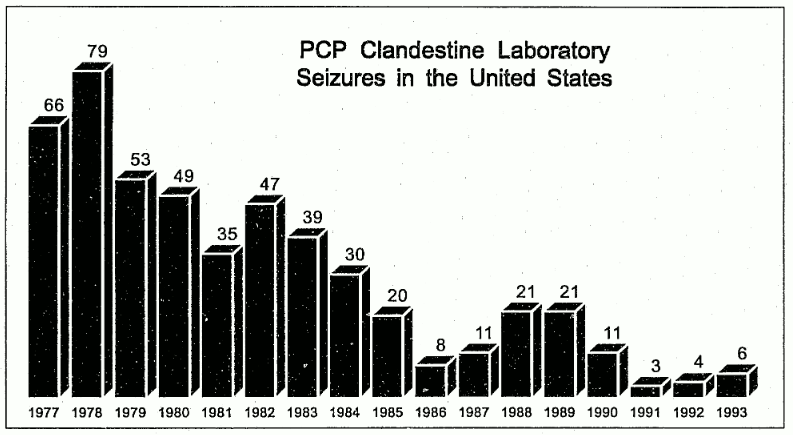
- Reporting indicates that the majority of the nation's PCP supply is manufactured and distributed by Los Angeles-based street gangs, affiliates, and similar trafficking groups. Buses, trains, airlines, and private automobiles are used to transport PCP from California sources of supply to secondary source cities across the country.


https://www.ncjrs.gov/pdffiles1/Digitization/150910NCJRS.pdf


https://archives.drugabuse.gov/sites/default/files/monograph64.pdf

https://www.bluelight.org/xf/threads/the-big-dandy-pcp-thread.316953/

https://drugs-forum.com/tags/pcp//

https://www.reddit.com/r/PCP/
PCP Reddit Search:
https://www.reddit.com/search/?q=pcp

https://erowid.org/experiences/subs/exp_PCP.shtml
Who uses PCP?
Individuals of all ages use PCP. Data reported in the National Household Survey on Drug Abuse indicate that an estimated 6 million U.S. residents aged 12 and older used PCP at least once in their lifetime. PCP (phencyclidine) was developed in the 1950s as an intravenous anesthetic, but its use for humans was discontinued because it caused patients to become agitated, delusional, and irrational. Today individuals abuse PCP because of the mind-altering, hallucinogenic effects it produces.
PCP poses particular risks for young people. Even moderate use of the drug can negatively affect the hormones associated with normal growth and development. PCP use also can impede the learning process in teenagers.


https://www.justice.gov/archive/ndic/pubs4/4440/4440p.pdf

https://www.justthinktwice.gov/drugs/pcp-phencyclidine

https://www.getsmartaboutdrugs.gov/drugs/pcp

https://www.campusdrugprevention.gov/drugs/pcp-phencyclidine


https://www.caymanchem.com/msdss/ISO60194m.pdf
Used for its mind-altering effects. PCP may cause hallucinations, distorted perceptions of sounds, and violent behavior. As a recreational drug, it is typically smoked, but may be taken by mouth, snorted, or injected. It may also be mixed with cannabis or tobacco. Adverse effects may include seizures, coma, addiction, and an increased risk of suicide.Flashbacks may occur despite stopping usage.
PCP is most commonly used in the United States. While usage peaked in the US in the 1970s, between 2005 and 2011 an increase in visits to emergency departments as a result of the drug occurred. PCP was initially made in 1926 and brought to market as an anesthetic medication in the 1950s. Its use in humans was disallowed in the United States in 1965 due to the high rates of side effects while its use in animals was disallowed in 1978.Management of PCP intoxication mostly consists of supportive care - controlling breathing, circulation, and body temperature - and, in the early stages, treating psychiatric symptoms
6 Drugs That Contain Phencyclidine (PCP) And May Cause False Positive On A Drug Test - Not to be a Negative Nancy, but even if you’re not into heavy drugs like PCP, you still might want to educate yourself when it comes to drugs that contain Phencyclidine (PCP) and may cause false ... Monday July 24, 2017 - insidermonkey.com Signs of phencyclidine (PCP) intoxication and how to treat it - Phencyclidine is an illegal hallucinogenic drug sometimes called PCP or angel dust. It can cause a person to feel dissociated from their senses and environment, and can lead to severe and lasting side ... Everything You Need to Know About Angel Dust (PCP) - PCP, also known as phencyclidine and angel dust, was originally developed as a general anesthetic but became a popular substance in the 1960s. It’s listed as a Schedule II drug in the United States, ... Withdrawal from Chronic Phencyclidine Treatment Induces Long-Lasting Depression in Brain Reward Function - Phencyclidine (PCP) is a drug of abuse that has rewarding and dysphoric effects in humans. The complex actions of PCP, and PCP withdrawal in particular, on brain reward function remain unclear. The ... Phencyclidine - Drug Toxicity - Latest prescription information about Phencyclidine. Learn how to pronounce the drug's name, its indications, dosage, how to take, when to take, when not to take, side effects, special precautions, ... How quickly does the body process phencyclidine? - Various factors influence how quickly a person’s body processes phencyclidine (PCP). Generally, the drug’s half-life is 21 hours. Different tests can detect PCP, and it may be detectable for up to 90 ... Phencyclidine-induced Loss of Asymmetric Spine Synapses in Rodent Prefrontal Cortex is Reversed by Acute and Chronic Treatment with Olanzapine - Schizophrenia is a chronic mental disorder that affects about 1% of the population and is characterized by so-called ‘positive’ and ‘negative’ symptoms, as well as cognitive deficits (Freedman, 2003). Two charged in Waldorf narcotics raid - Charles County Sheriff’s Office detectives arrested two Waldorf residents on December 22 after executing a search warrant in the 3000 block of Gallery Place as part of an ongoing drug distribution ... 'Mad Men' actor reveals he smoked PCP in jail - Mad Men actor Harry Hamlin, 74, has revealed he smoked phencyclidine (PCP) while in jail over 50 years ago. The actor said he was “forced” to take the hallucinogenic drug in 1970. “In jail, I was ... Laws Governing Drug Use - The federal government prohibits the manufacture, distribution, dispensation and possession of controlled substances unless specifically permitted by statute. The government categorizes controlled ... 6 Drugs That Contain Phencyclidine (PCP) And May Cause False Positive On A Drug Test - Diphenhydramine is one of the drugs that contain Phencyclidine (PCP) and may cause false positive on a drug test. Kinda scary that the antihistamines we use on bug bites and poison or to alleviate ...
| ||
| Hallucinogens | Link to this page |




